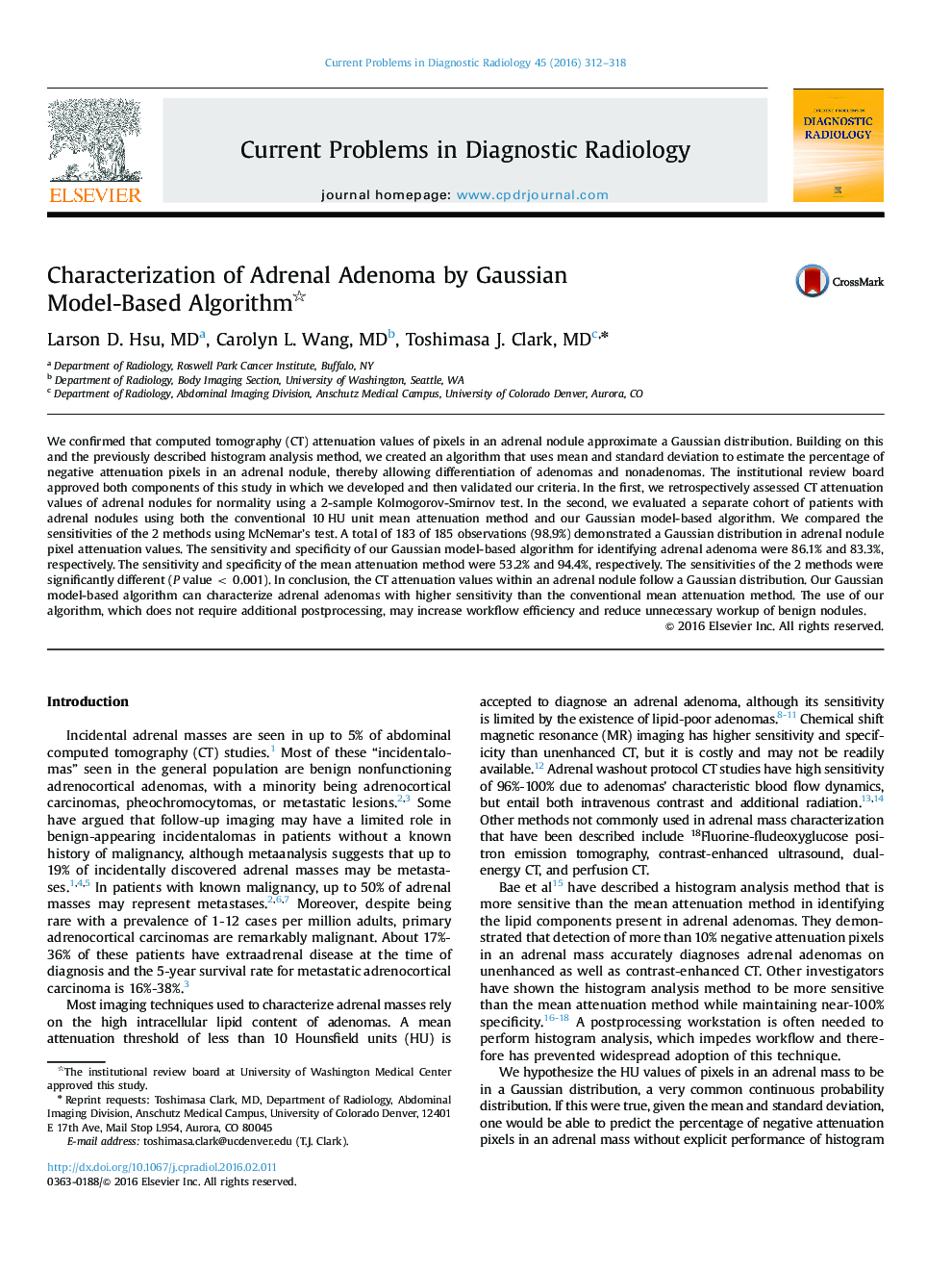| Article ID | Journal | Published Year | Pages | File Type |
|---|---|---|---|---|
| 4223341 | Current Problems in Diagnostic Radiology | 2016 | 7 Pages |
We confirmed that computed tomography (CT) attenuation values of pixels in an adrenal nodule approximate a Gaussian distribution. Building on this and the previously described histogram analysis method, we created an algorithm that uses mean and standard deviation to estimate the percentage of negative attenuation pixels in an adrenal nodule, thereby allowing differentiation of adenomas and nonadenomas. The institutional review board approved both components of this study in which we developed and then validated our criteria. In the first, we retrospectively assessed CT attenuation values of adrenal nodules for normality using a 2-sample Kolmogorov-Smirnov test. In the second, we evaluated a separate cohort of patients with adrenal nodules using both the conventional 10 HU unit mean attenuation method and our Gaussian model-based algorithm. We compared the sensitivities of the 2 methods using McNemar’s test. A total of 183 of 185 observations (98.9%) demonstrated a Gaussian distribution in adrenal nodule pixel attenuation values. The sensitivity and specificity of our Gaussian model-based algorithm for identifying adrenal adenoma were 86.1% and 83.3%, respectively. The sensitivity and specificity of the mean attenuation method were 53.2% and 94.4%, respectively. The sensitivities of the 2 methods were significantly different (P value < 0.001). In conclusion, the CT attenuation values within an adrenal nodule follow a Gaussian distribution. Our Gaussian model-based algorithm can characterize adrenal adenomas with higher sensitivity than the conventional mean attenuation method. The use of our algorithm, which does not require additional postprocessing, may increase workflow efficiency and reduce unnecessary workup of benign nodules.
